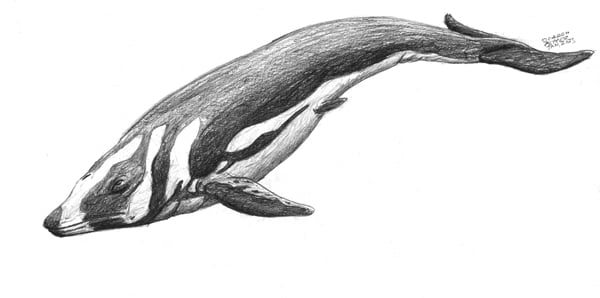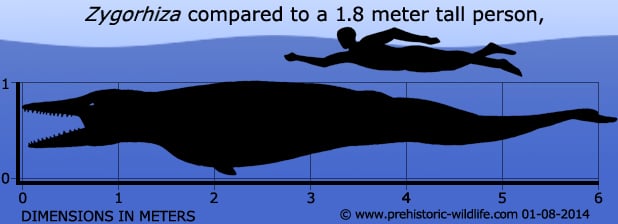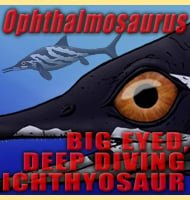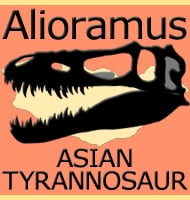In Depth
Zygorhiza belongs to the same group of primitive prehistoric whales as Dorudon and both of these whales are more distantly related to the massive Basilosaurus which was quite possibly a predator of both of these whales. Although similar in form to Basilosaurus, Zygorhiza had a much smaller body that was actually more in proportion to modern whales with the total body length being six times greater than the length of the skull.
The front limbs of Zygorhiza are actually very primitive in form because the elbow was still capable of being flexed. In later more modern forms the joints of the front limbs would become completely fused to form rigid paddles for better control in the water. The retention of this joint has led to the suggestion that Zygorhiza left the water to mate and give birth on land just like a pinniped (seals, walruses, etc.), however this is just a theory. Even with jointed front limbs, Zygorhiza was still much better adapted to an aquatic life and at six metres long it was even bigger than a bull elephant seal. It’s just as probable that this elbow joint was merely a trait of its more terrestrial ancestors like Ambulocetus that would later become lost as habitat conditions favoured a more rigid fore limb construction.
Like with all known ancient whales from its time, Zygorhiza was a predator of other marine animals, hunting either fish, smaller marine mammals or even sea birds when able. The robust teeth and relatively long narrow jaws resembled those of earlier marine reptiles like Mosasaurus, and it’s quite probably that whales like Zygorhiza evolved to fill a similar predatory niche as them. However the early members of the cetacea were not alone in these waters, and equally large if not bigger sharks like C. angustidens were already patrolling the world’s oceans, giving the smaller whales like Zygorhiza something else to worry about.
Further Reading
– A review of the Archaeoceti. – Washington: Carnegie Institution of Washington. pp. 100–177. – R. Kellogg – 1936. – An archaeocete whale (Cetacea: Archaeoceti) from the Eocene Waihao Greensand, New Zealand. – Journal of Vertebrate Paleontology. 17 (3): 574–583. – Richard K�hler & Ewan R. Fordyce – 1997.











